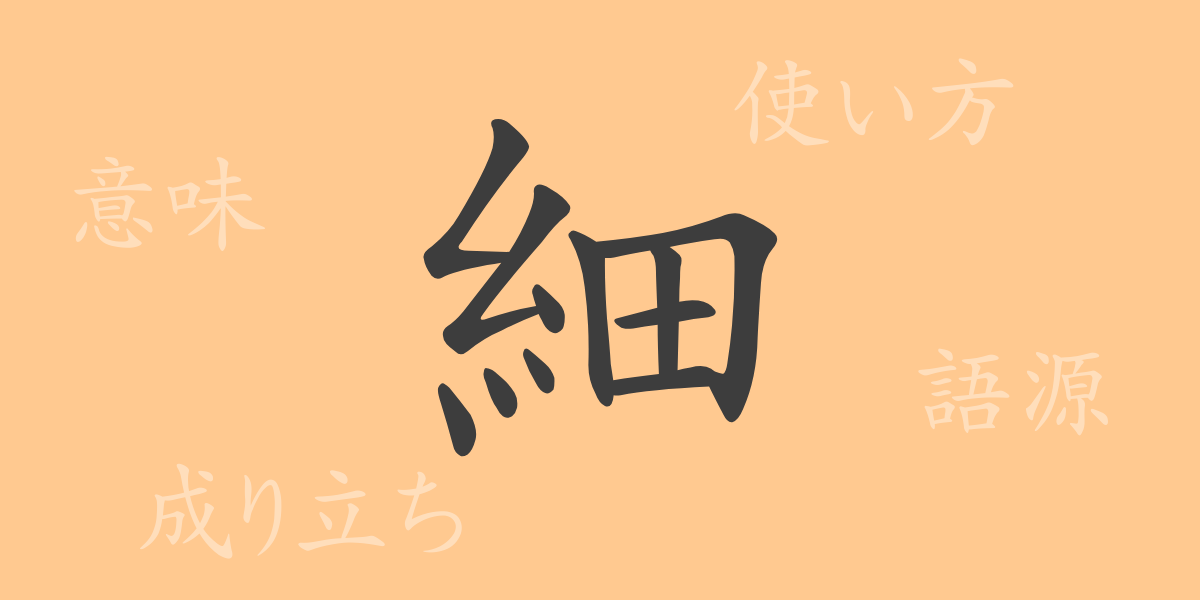There are many kanji in the Japanese language, each with its unique history and meaning. The focus of this article is the kanji “細” (sai). What is the origin of this kanji, and what meanings and usages does it have in our daily lives? How is it read, and in what idioms and phrases is it used? In this article, we will delve into the charm of “細” (sai).
Etymology of 細 (sai)
The kanji “細” (sai) originates from ancient China, initially meaning “to divide threads finely.” It depicts the appearance of threads being finely divided. Over time, it came to refer to small parts or details, encompassing anything small in general. In this way, “細” (sai) acquired various meanings related to small parts or details.
Meanings and Usages of 細 (sai)
The kanji “細” (sai) means “fine,” “small,” and “detailed.” Specifically, it is used to indicate something physically small, detailed points, or minor differences. Metaphorically, it can also mean “careful” or “meticulous.” Common usages include combining it with adjectives or nouns, such as “細かい” (komakai), “細心” (saishin), and “細部” (saibu).
Reading, Stroke Count, and Radical of 細 (sai)
The kanji “細” (sai) has several readings.
- Reading: In the on’yomi reading, it is “サイ” (sai), and in the kun’yomi reading, it is “ほそい” (hosoi), “ほそる” (hosoru), and “こまかい” (komakai).
- Stroke count: “細” (sai) has a total of 11 strokes.
- Radical: The radical of “細” (sai) is 糸部 (itohen), which is used to classify kanji related to threads.
Idioms, Phrases, and Proverbs Using 細 (sai) and Their Meanings
There are many idioms, phrases, and proverbs in Japanese that include “細” (sai), demonstrating the richness of Japanese expression. Here are a few examples:
- 細心の注意を払う (saishin no chūi o harau) – To act with great care.
- 細道を行く (hosomichi o iku) – To proceed with attention to details.
- 細かい点にこだわる (komakai ten ni kodawaru) – To be concerned with small details.
- 細部にわたる (saibu ni wataru) – To cover all the details.
- 細腕繁盛記 (hosoude hanjōki) – A tale of success achieved through ingenuity and effort by someone with limited strength.
Conclusion on 細 (sai)
Every kanji has its history and background, and “細” (sai) is no exception. This kanji, frequently used in daily life, is indispensable when referring to details or small things. Additionally, idioms and phrases containing “細” (sai) highlight the richness of Japanese expression. Through this article, we hope you have gained a deeper understanding of the multifaceted nature of “細” (sai).

























